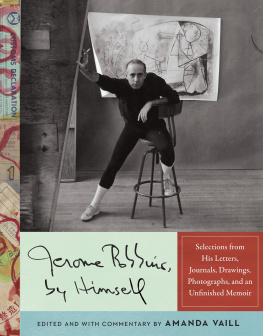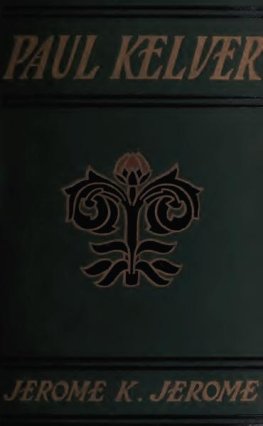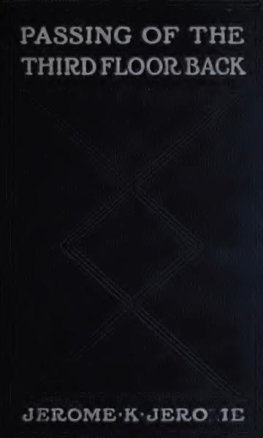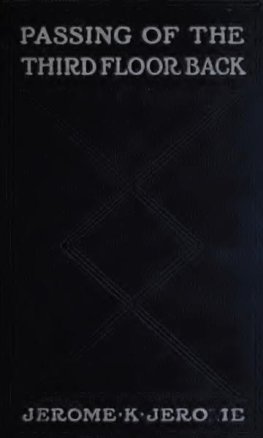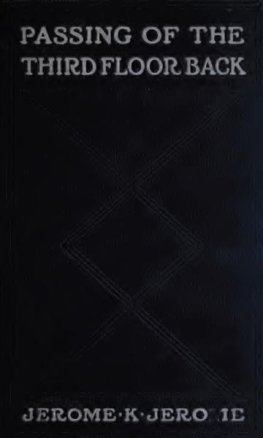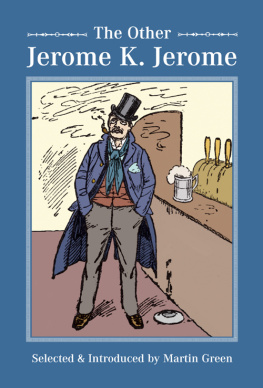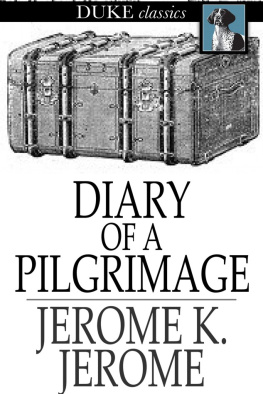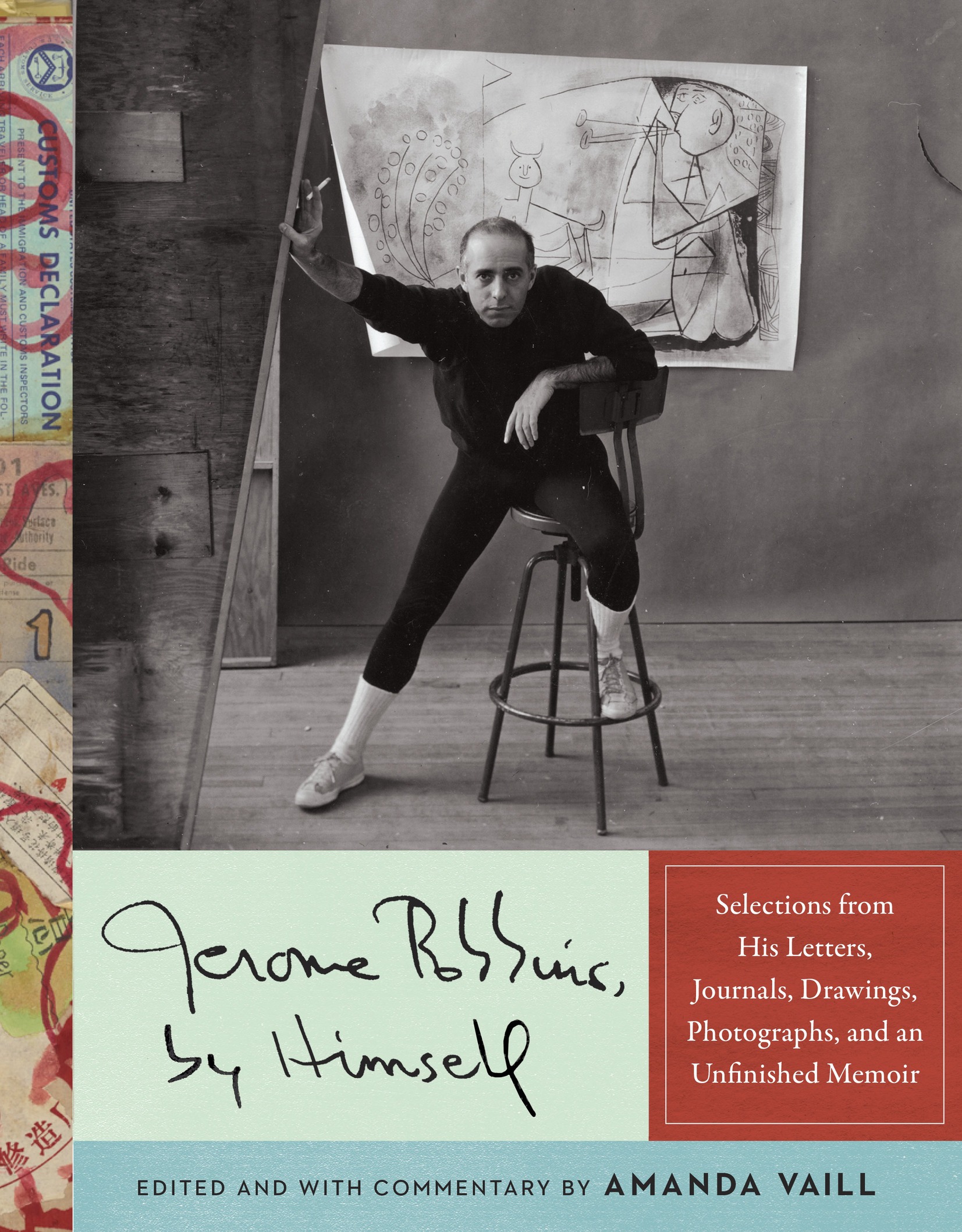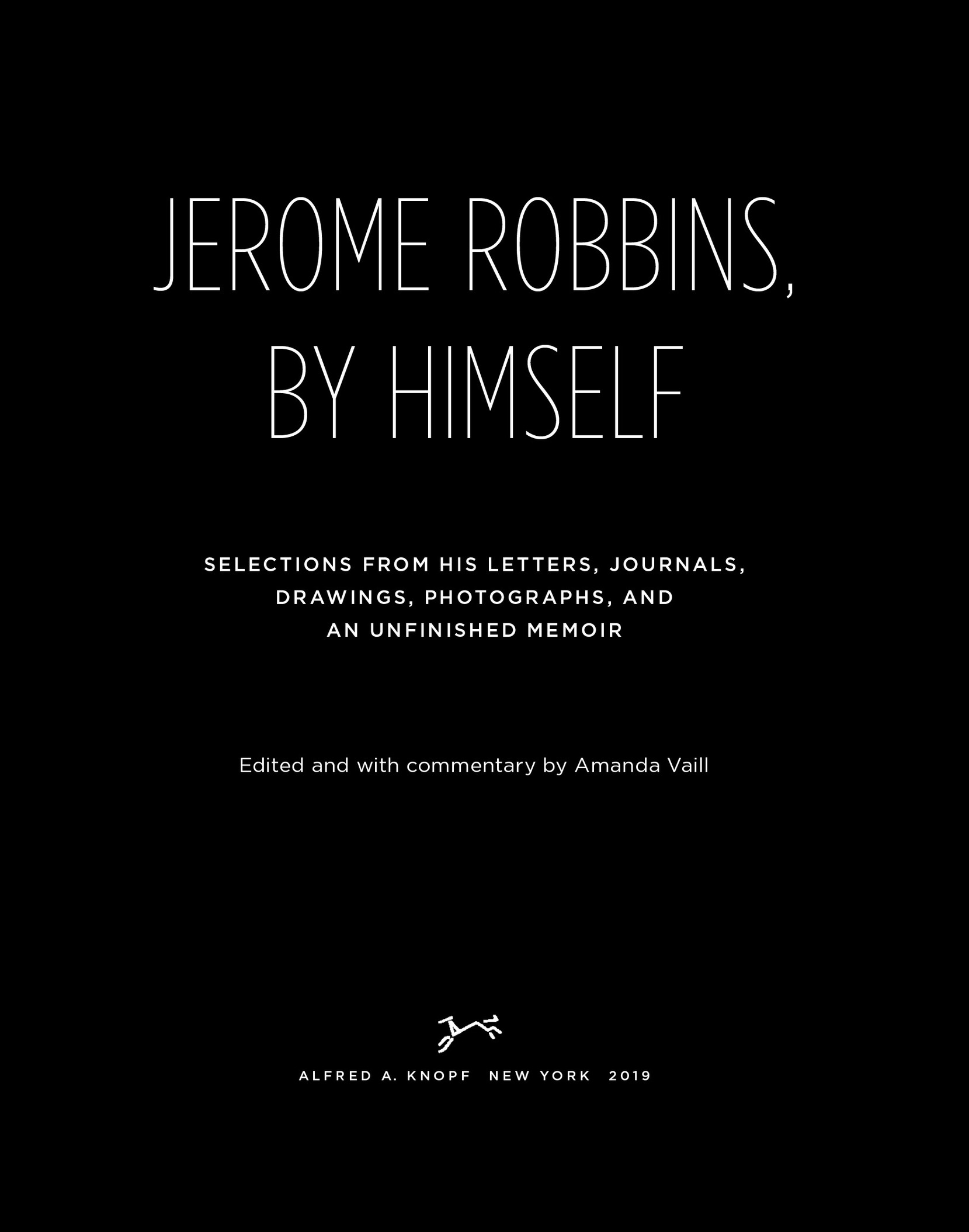A LSO BY A MANDA V AILL
Everybody Was So Young: Gerald and Sara Murphy: A Lost Generation Love Story
Somewhere: The Life of Jerome Robbins
Hotel Florida: Truth, Love, and Death in the Spanish Civil War
THIS IS A BORZOI BOOK
PUBLISHED BY ALFRED A. KNOPF
Copyright 2019 by The Robbins Rights Trust
Introduction and commentary copyright 2019 by Amanda Vaill
All rights reserved. Published in the United States by Alfred A. Knopf, a division of Penguin Random House LLC, New York, and distributed in Canada by Penguin Random House Canada Limited, Toronto.
www.aaknopf.com
Knopf, Borzoi Books, and the colophon are registered trademarks of Penguin Random House LLC.
All photographs and illustrations are reprinted with the permission of The Robbins Rights Trust.
Library of Congress Cataloging-in-Publication Data
Names: Robbins, Jerome, author. | Vaill, Amanda, editor.
Title: Jerome Robbins, by himself : selections from his letters, journals, drawings, photographs, and an unfinished memoir / edited and with commentary by Amanda Vaill.
Description: First edition. | New York : Alfred A. Knopf, 2019. | This is a Borzoi bookTitle page verso. | Includes index.
Identifiers: LCCN 2018054551 (print) | LCCN 2019014584 (ebook) | ISBN 9780451494672 (ebook) | ISBN 9780451494665 (hardcover)
Subjects: LCSH : Robbins, JeromeCorrespondence. | Robbins, JeromeDiaries. | Robbins, JeromeNotebooks, sketchbooks, etc. | ChoreographersUnited StatesBiography. | DancersUnited StatesBiography.
Classification: LCC GV 1785. R 52 (ebook) | LCC GV 1785. R 52 A 25 2019 (print) | DDC 792.8092 [ B ]dc23
LC record available at https://lccn.loc.gov/2018054551
Ebook ISBN9780451494672
Cover photograph: Jerome Robbins in his 67th Street studio, New York City, 1958 by Arnold Newman / Getty Images
Collage courtesy of The Robbins Rights Trust; Photograph of Robbins and his dog Nick: Jesse Gerstein
Cover design by Jenny Carrow
v5.4
ep
To William Earle and Aidan Mooney
with love and gratitude
When I was a child, art seemed like a tunnel to me.
At the end of that tunnel I could see light where the world opened up, waiting.
J EROME R OBBINS
Contents
PREFACE
The choreographer and director Jerome Robbins was famous for many thingsreinventing the Broadway musical, creating a vernacular American ballet, winning four Tony Awards, five Donaldson Awards (precursor to the Tonys), two Oscars, and an Emmy, naming names to the House Un-American Activities Committeebut a way with words was not one of them. He was not articulate, said his frequent collaborator and occasional nemesis Arthur Laurents, a statement that was echoed by Stephen Sondheim, Harold Prince, his sometime assistant director Gerald Freedman, the critic Frank Rich, and numerous others. And indeed, for someone who dealt in the kinetic and the visual, who staged dance and action by working physically with the performers who would embody the images he had in his mind, it seems logical that being a wordsmith might not be in his job description or his skill set.
But as I discovered almost as soon as I began working on my 2006 biography of Robbins, Somewhere, this assumption couldnt have been more wrong. Jerome Robbins was a prolific correspondent, inveterate journal keeper, perceptive critic, dramatic scenarist, whimsical (sometimes ribald) versifier, even confessional fiction writer. He wrote about his identity (artistic and sexual), his background, his aspirations, his conflicts. He wrote to, and about, his family, his lovers, and his friends and associatesincluding the playwright Arthur Laurents, the choreographer George Balanchine, the ballerina Tanaquil Le Clercq, the composer Leonard Bernstein, the novelist and poet Robert Graves, the writer and impresario Lincoln Kirstein, the actor Laurence Olivier, the novelist Edna OBrien, the director Ingmar Bergman, and scores of others, some professionally connected to him, some not. He wrote in airplanes and on trains, at home and while traveling. He wrote for his correspondents, for the public, and for himself. His personal papers consume 100 linear feet of shelf space, and the professional papers take up a further 141; this archive, which is part of the Jerome Robbins Dance Division at the New York Public Library for the Performing Arts, includes an array of material that reveals Robbins to have been not only an expressive writer by any measure, with a unique voice, but also an avid photographer, watercolorist, and draftsman. Taken together, Robbinss writings and artwork form an extraordinary record of a protean creative life and a time of enormous artistic fermenta record that is the more extraordinary because so few people, including some he worked with closely, have suspected its existence.
This book aims to construct from that record a chronicle of Robbinss life as it looked from the inside, beginning with his childhood and his struggles as an aspiring but unrealized artist, going on through his glory days as a revolutionary force in American theater and dance, to his latter years, in which he strove to reconcile his conflicts and ensure his legacy. As such it offers a different perspective on this contradictory artist than has been possible in any of the biographical works about him. It is neither objective nor exhaustivethere is no coverage of events or relationships that Robbins didnt write aboutnor analytical, at least not in the sense of third-party analysis. It draws on his many journals (including his teenage diary, the work notebooks that lay bare his creative process, and the hundreds of loose sheets of paper on which he jotted thoughts, impressions, and memories); his correspondence; his autobiographical fiction; his occasional essays (published and unpublished); his memoirs of childhood and apprenticeship, drafted for the most part in the 1970s; the script of his autobiographical theater piece, The Poppa Piece; and more.
Ive arranged these elements to form a selective and impressionistic chronological narrative, one that occasionally groups together material created at different times for what I hope is a richer effect (each selection, however, carries the date of composition). For example, there are few documents from his childhood or early career, but these are the periods he covered most thoroughly in autobiographical writings in later life, so in the first sections of the book Ive threaded his retrospective memoirs among his juvenilia. In an effort to avoid repetition or obscurity, and to be as representative and inclusive as possible, Ive made cuts in a number of the selections, in particular the memoirs, the creative writing, and to a lesser extent the correspondence and journals. Because this is Robbinss story, told in his own voice, Ive chosen not to interpolate editorial commentary between the documents. As he himself wrote to Arthur Laurents about Jerome Robbins Broadway, The thing Ive tried to avoidis to talk about [the] career, work, etc. and just let the pieces say it for me. But to locate those pieces within the framework of Robbinss life and work, Ive prefaced each chronological section with brief contextual commentary; Ive provided a chronology of events and work at the back of the book; and Ive footnoted references within the text that might be confusing or meaningless to a reader without a detailed knowledge of this books background.

